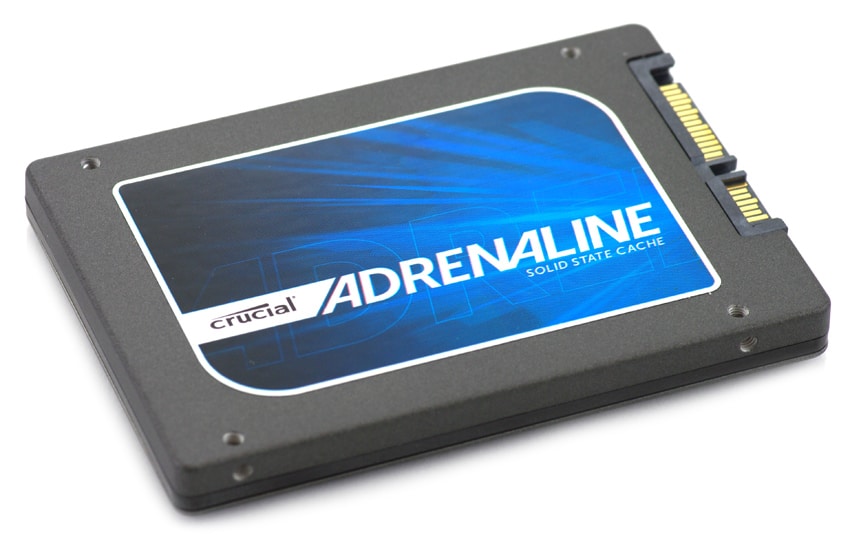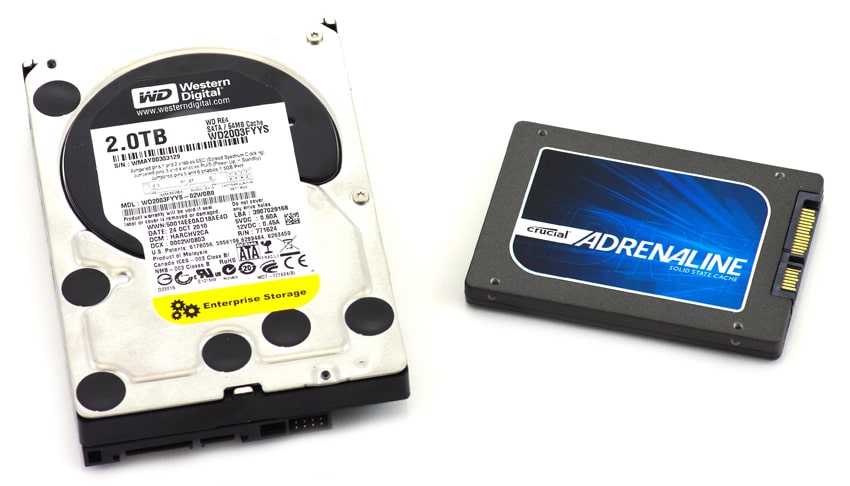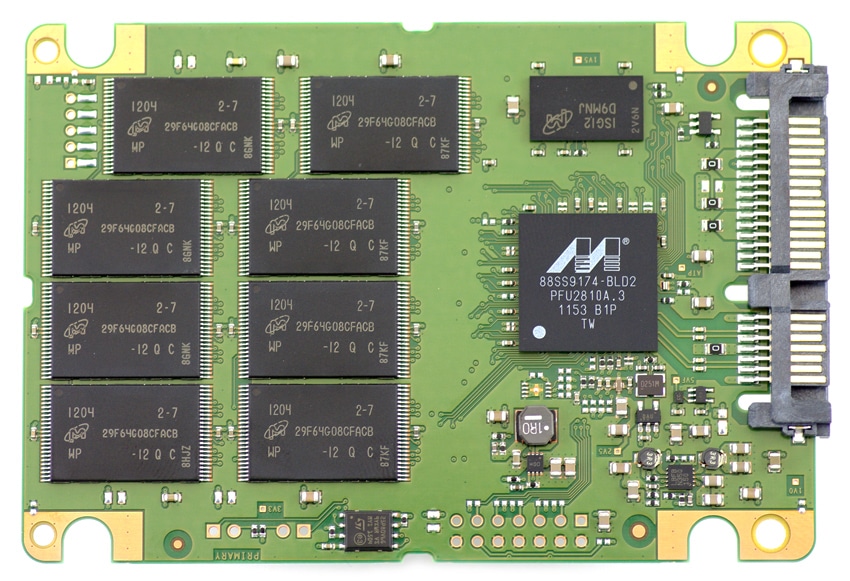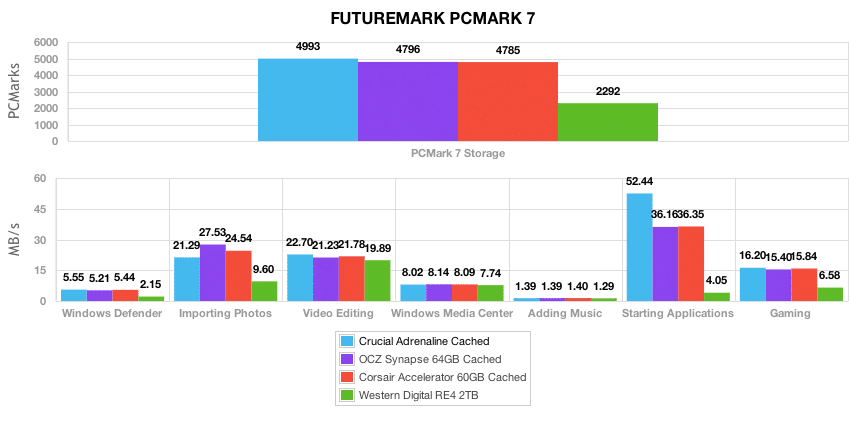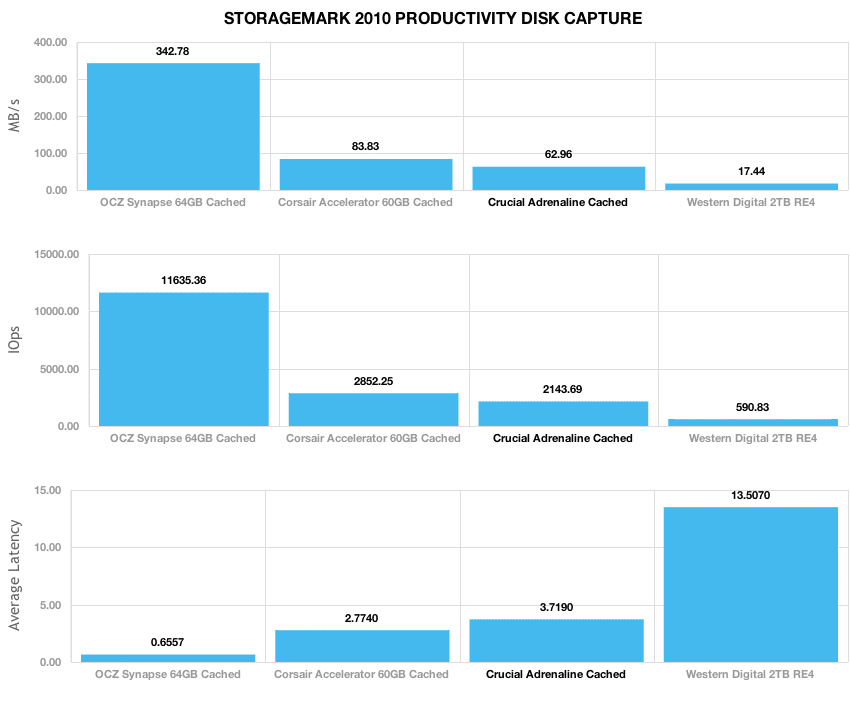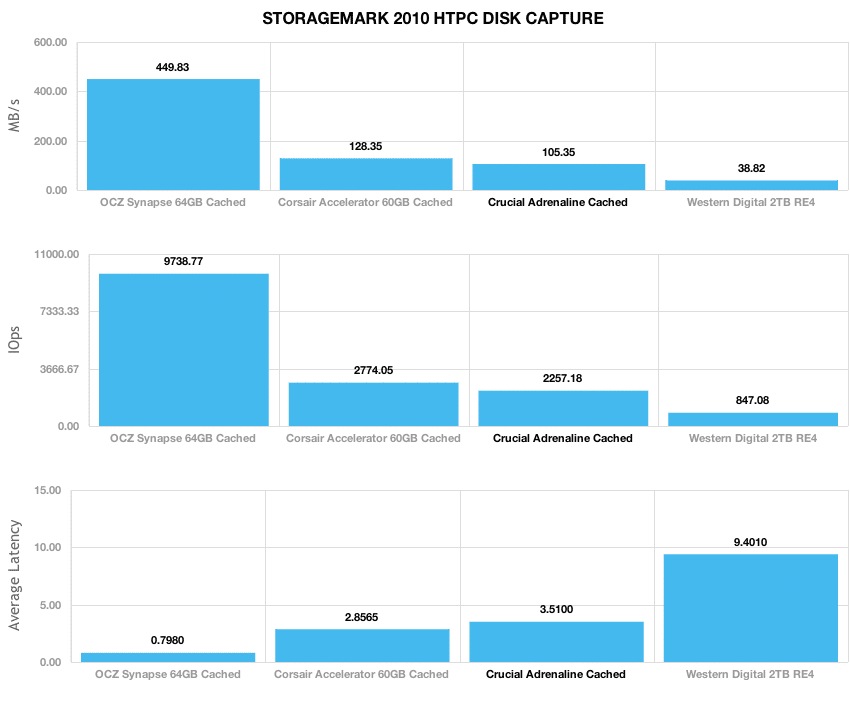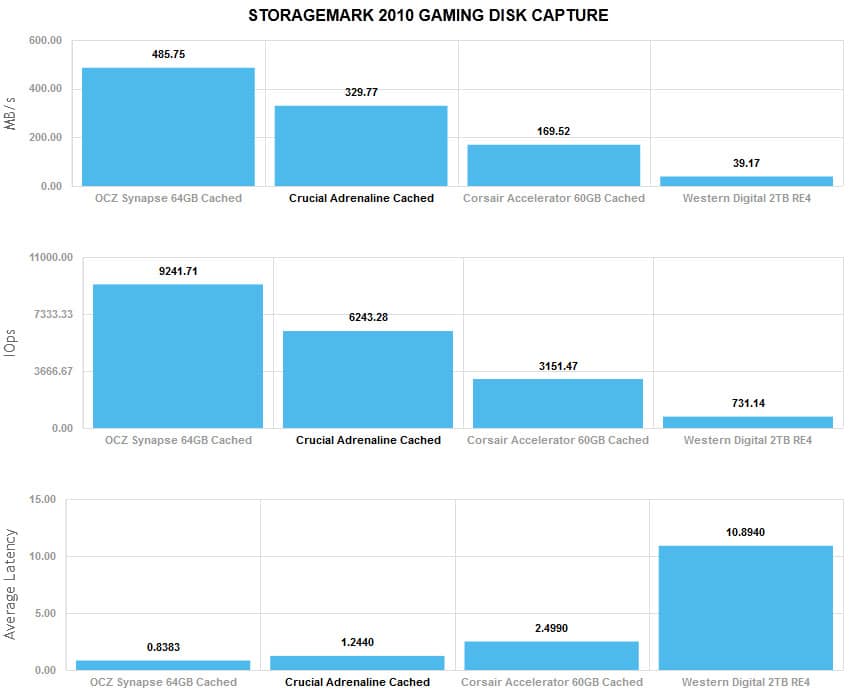
The Adrenaline Caching SSD solution is Crucial’s effort to leverage their m4 SSD pedigree to make application acceleration for consumers easy and affordable. Based around the Marvell controller and SATA 6Gb/s interface, the 50GB caching SSD gives consumers an interesting blend of performance, reliability and Micron home-grown NAND in an easy to install caching platform based on NVELO’s Dataplex software.
Crucial’s take on the consumer caching SSD segment is to keep it simple. While the OCZ Synapse and Corsair Accelerator both come in multiple capacity points, the Adrenaline comes in one 50GB capacity with a street price of $99. Crucial also offers the Marvell 9174 controller inside, while the other two leverage SandForce, though Corsair’s is previous generation. Crucial and OCZ both use a SATA 6Gb/s interface to help drive performance, where Corsair went the more value-oriented route with SATA 3Gb/s. So while OCZ goes for the high end and Corsair goes for the value buyer, Crucial slots in with a mainstream performance offering that aims to provide a blend of performance and price.
Crucial ships the Adrenaline with 3.5″ mounting bracket and three year warranty.
Crucial Adrenaline Specifications
- Capacity – 50GB (CT050M4SSC2BDA)
- Marvell 9174 Controller
- 64GB Micron MLC NAND (59.63GB Usable)
- SATA 6Gb/s
- 2.5″ form factor
- Three year warranty
Design and Build
The 50GB Crucial Adrenaline has a design mirroring the look of the family of drives from Crucial and Micron. The case is very simple, with a metallic gray paint covering a metal alloy body. The multi-use case can be setup in both 9.5mm and 7mm heights by removing plastic shim between the top and bottom cover. With shorter screws the drive can be instantly converted to handle different mounting configurations. The front of the Crucial Adrenaline offers the industry-standard SATA power and data connection, with no service pins exposed for firmware flashing modes. All updates are handled through burning an ISO image to a CD or DVD (or USB stick) and flashing the firmware through low-level operating system.
The Crucial Adrenaline is very easy to take apart after removing four Phillips head screws from the top of the drive. With the circuit board outside of the drive, we can get a good look at the new Marvell SATA 6Gb/s controller at the heart of the Crucial Adrenaline. With Micron’s close partnership with Marvell, they are able to get access to controller variations not offered to other companies.
The muscle behind the Adrenaline is Micron’s own 25nm flash. The 50GB model includes eight 8GB Micron 29F64G08CFACB NAND pieces, split up with eight soldered to each side of the circuit board.
Synthetic Benchmarks
To test the Crucial Adrenaline in our consumer test rig, we paired it up with the 7200RPM 2TB Western Digital RE4. This is the same system and hard drive used for the OCZ Synapse Cache and Corsair Accelerator review, for an apples to apples comparison besides the caching SSD swap.
To show caching improvements on the synthetic benchmarks side, we turned to PCMark 7 for the storage benchmark.
The Crucial Adrenaline offered the fastest PCMark 7 score, as well as the highest performance in the sub-benchmark measuring application launching speed.
Real-World Benchmarks
For the average consumer, trying to translate random 4K write speeds into an everyday situation is pretty difficult. It helps when comparing drives in every setting possible, but it doesn’t exactly work out into faster everyday usage or better game loading times. For this reason we turned to our StorageMark 2010 traces, which include HTPC, Productivity, and Gaming traces to help readers find out how a drive might rank under their conditions.
The first real-life test is our HTPC scenario. In this test we include: playing one 720P HD movie in Media Player Classic, one 480P SD movie playing in VLC, three movies downloading simultaneously through iTunes, and one 1080i HDTV stream being recorded through Windows Media Center over a 15 minute period. Higher IOps and MB/s rates with lower latency times are preferred. In this trace we recorded 2,986MB being written to the drive and 1,924MB being read. Our second real-life test covers disk activity in a productivity scenario. For all intents and purposes this test shows drive performance under normal daily activity for most users. This test includes: a three hour period operating in an office productivity environment with 32-bit Vista running Outlook 2007 connected to an Exchange server, web browsing using Chrome and IE8, editing files within Office 2007, viewing PDFs in Adobe Reader, and an hour of local music playback with two hours of additional online music via Pandora. In this trace we recorded 4,830MB being written to the drive and 2,758MB being read.
In our productivity trace the Crucial Adrenaline measured an average speed of 62.96MB/s, compared to 17.44MB/s from our 7200RPM hard drive by itself. In this test the performance increase measured 257%.
Our second real-life test covers disk activity in a productivity scenario. For all intents and purposes this test shows drive performance under normal daily activity for most users. This test includes: a three hour period operating in an office productivity environment with 32-bit Vista running Outlook 2007 connected to an Exchange server, web browsing using Chrome and IE8, editing files within Office 2007, viewing PDFs in Adobe Reader, and an hour of local music playback with two hours of additional online music via Pandora. In this trace we recorded 4,830MB being written to the drive and 2,758MB being read.
In our HTPC trace the Crucial Adrenaline measured 105.35MB/s average, or 173% faster than a 7200RPM desktop hard drive alone.
Our third real-life test covers disk activity in a gaming environment. Unlike the HTPC or Productivity trace, this one relies heavily on the read performance of a drive. To give a simple breakdown of read/write percentages, the HTPC test is 64% write, 36% read, the Productivity test is 59% write and 41% read, while the gaming trace is 6% write and 94% read. The test consists of a Windows 7 Ultimate 64-bit system pre-configured with Steam, with Grand Theft Auto 4, Left 4 Dead 2, and Mass Effect 2 already downloaded and installed. The trace captures the heavy read activity of each game loading from the start, as well as textures as the game progresses. In this trace we recorded 426MB being written to the drive and 7,235MB being read.
In our Gaming trace the Crucial Adrenaline averaged 329.77MB/s average, with a performance increase of 741% over a hard drive by itself.
Conclusion
The Crucial Adrenaline is simple to implement and simple to decide upon, since they only offer it in a single 50GB capacity. Rightfully so, as we’ve seen modest improvement in caching at best with larger capacity SSDs. Crucial claims up to an 8X improvement over a standard hard drive with their caching solution. While that may be true in some workloads, we saw the solution posting its best scores in our gaming trace. In our other real world traces the gains were more like 3X.
While the Adrenaline didn’t take any top spots away from the OCZ Synapse, it’s important to remember a few things. Primarily since the Crucial brand is owned by Micron, buyers should feel good about the guys who make the drive, are also the ones that make the NAND and firmware, so the drive should have a reliability and support advantage. It is also another controller option for buyers who might want something other than a SandForce controller, or more usable cache space than similarly priced Corsair or OCZ caching solutions
In the end though the Crucial Adrenaline provides substantial improvements over HDD-only performance. Using the same backend NVELO caching software as other consumer caching solutions, the Adrenaline comes in with tested software, with strong support and recent updates.
Pros
- Backed by Micron engineering and NAND fab
- Good gaming performance
- More caching space than similar-priced Corsair or OCZ offerings
Cons
- HTPC and Productivity gains weren’t as strong as other solutions
Bottom Line
The Crucial Adrenaline caching SSD is a nice effort, offering strong performance gains over HDD-only solutions. Backed with the Micron brand and NVELO Dataplex software, the Adrenaline offers good performance with plenty of caching space for users wanting to extend SSD-performance over a large hard drive.
Crucial Adrenaline at Amazon.com

